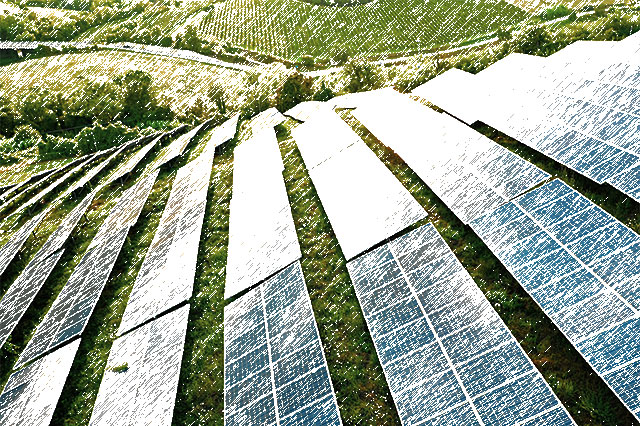insight
How will Industry 5.0 affect the future of manufacturing
As technology continues to evolve and expand its reach, it's ushering in a new era of manufacturing.
When machines first appeared in 1750s England, it marked the dawn of a new age—the beginning of the Industrial Revolution. Every subsequent iteration has changed the way we do business, from the rise of assembly lines to mechanized production and automation. Now, as technology continues to evolve and expand its reach, it's ushering in a new era of manufacturing.
Over this article we will take a deep dive into Industry 5.0 and how it will shape the future of manufacturing. We will cover the expected impact of this new industrial revolution and what it will mean for businesses and workers.
What Is Industry 4.0?
In order to grasp the significance of Industry 5.0, it's important to understand what it is and how it evolved. In essence, it is the natural progression from the 4th industrial revolution. Beginning in the mid-2000s, Industry 4.0 saw a digitalization of production processes, including the widespread use of software to facilitate operations.
Many companies underwent digital transformations, beginning to modernize and optimize their processes. For instance, cloud-based systems allowed for increased flexibility and agility in supply chain management. Communication and information sharing between machines and workers were also made possible.
Machines will take on a more collaborative role in the workplace, working alongside humans instead of being subservient to them.
Industry 5.0 takes this to another level, fully integrating advanced technologies such as artificial intelligence (AI), the Internet of Things (IoT), and 3D printing to reinvent how business is done. It will result in a shift from rigid, centralized production models to flexible and adaptive ones. However, it could be argued that the digital aspects of Industry 5.0 were already somewhat present in Industry 4.0—they will just be mass-adopted and improved in the 5th iteration.
Due to the presence of artificial intelligence, one main difference between Industry 4.0 and 5.0 is a shift in the human-robot relationship. Machines will take on a more collaborative role in the workplace, working alongside humans instead of being subservient to them.
The Industry 5.0 strategy
Instead of specific technologies, Industry 5.0 can be defined by its strategic action. Increasingly, businesses will focus on three pillars: resilience, sustainability, and human centricity.
Resilience
According to the European Commission, "resilience" is defined as the ability of businesses to manage risks and anticipate changes. It emphasizes creating agile systems that can quickly adapt to unexpected market disruptions or shifts. The COVID-19 pandemic and Ukraine War only underline the importance of resilience.

Resilience will not only pertain to profit-making and cost-cutting concerns. It will also consider the ethical implications of decisions, such as how they impact society and the environment. Businesses must anticipate and quickly adapt to changes in consumer trends, regulations, and the geopolitical landscape. All these changes will likely be managed and tracked by intelligent algorithms that can learn from data.
As such, stability means more than just financial performance. It involves a holistic approach to operations and ensuring that the business can weather any storm. Regarding manufacturing, this pillar must extend to every part of the supply chain.
Circular economies could be employed, which reuse and recycle materials to create a closed-loop system.
Sustainability
Most world leaders agree that sustainability is the key to creating a better future for everyone. From climate change to depleting resources, the situation is dire and demands urgent action. Industry 5.0 will focus on sustainable practices in all aspects of the production process. Businesses must consider how they can reduce their carbon footprints, from using alternative energy sources to investing in renewable materials. Additionally, circular economies could be employed, which reuse and recycle materials to create a closed-loop system.
Once again, it could be argued that this was already a key part of Industry 4.0. But in 5.0, sustainability will no longer be an afterthought or cost-cutting measure. It will be incorporated into the core strategy and embraced to ensure long-term success. We may also see businesses actively working to increase their positive impact rather than simply minimizing their negative one.

"Net Positive" is an emerging concept that uses industrial processes to benefit the environment rather than simply reducing emissions. Taken from the book "Net Positive: How Courageous Companies Thrive by Giving More Than They Take" by Andrew S. Winston and Paul Polman, this model could be used to create a new kind of company which actively works to contribute to society. Businesses could employ this by investing in renewable energy sources or contributing to reforestation efforts.
In short, they will become part of the solution rather than the problem. As customers become more aware and conscious of the environment, this could become a key factor in deciding which business to purchase from.
Human-Centricity
Finally, businesses will focus on human-centricity. This involves creating solutions tailored to people's needs rather than trying to fit people into existing systems. There will be no more "cogs in a machine" mentality. That mentality will switch from workers serving the machine to the organizations serving the workers.
A human-centric organization will greatly emphasize employee welfare—from physical and mental health to job satisfaction. AI will automate mundane or dangerous tasks to free up workers' time, whilst robots may take on physically taxing labour. Businesses may also focus on allowing employees to develop skills and improve their quality of life.

From diversity in the workplace to employee empowerment, the goal is for technology to enable humans to reach their full potential. Not only will this give businesses a competitive edge, but it will also help create more equitable societies. With the recent labour shortage affecting many countries and industries, it could very well be the key to increasing employee retention.
AI-driven supply chain management and predictive analytics could lead to faster, more efficient production processes.
Bottom line: Industry 5.0 in manufacturing
The 5th industrial revolution has the potential to be a game-changer for manufacturing. Resilience, sustainability, and human-centricity will form the tripartite foundation of this new era in production. Recycling and reusing materials, renewable energy sources, and additive manufacturing will help maintain sustainability. Additive manufacturing is creating 3D-printed parts on demand and using fewer materials.
The focus on human-centricity, however, could have the most profound effect. Investing in robotics and AI to automate mundane tasks will significantly improve the safety and quality of working conditions. Smart education, such as augmented/virtual reality, will help modernize and streamline training. Businesses focusing on employee satisfaction may even find themselves at an advantage in the recruitment race.
Finally, AI-driven supply chain management and predictive analytics could lead to faster, more efficient production processes. It's especially relevant in the context of Industry 5.0's resilience pillar. Cloud technology and AI can also help businesses better manage their assets, reduce waste and respond quickly to disruptions.